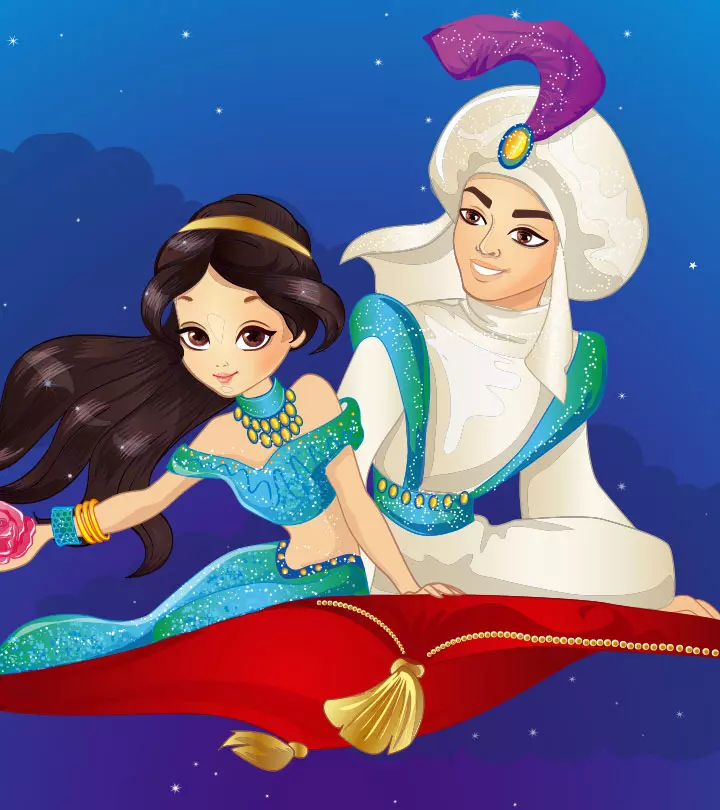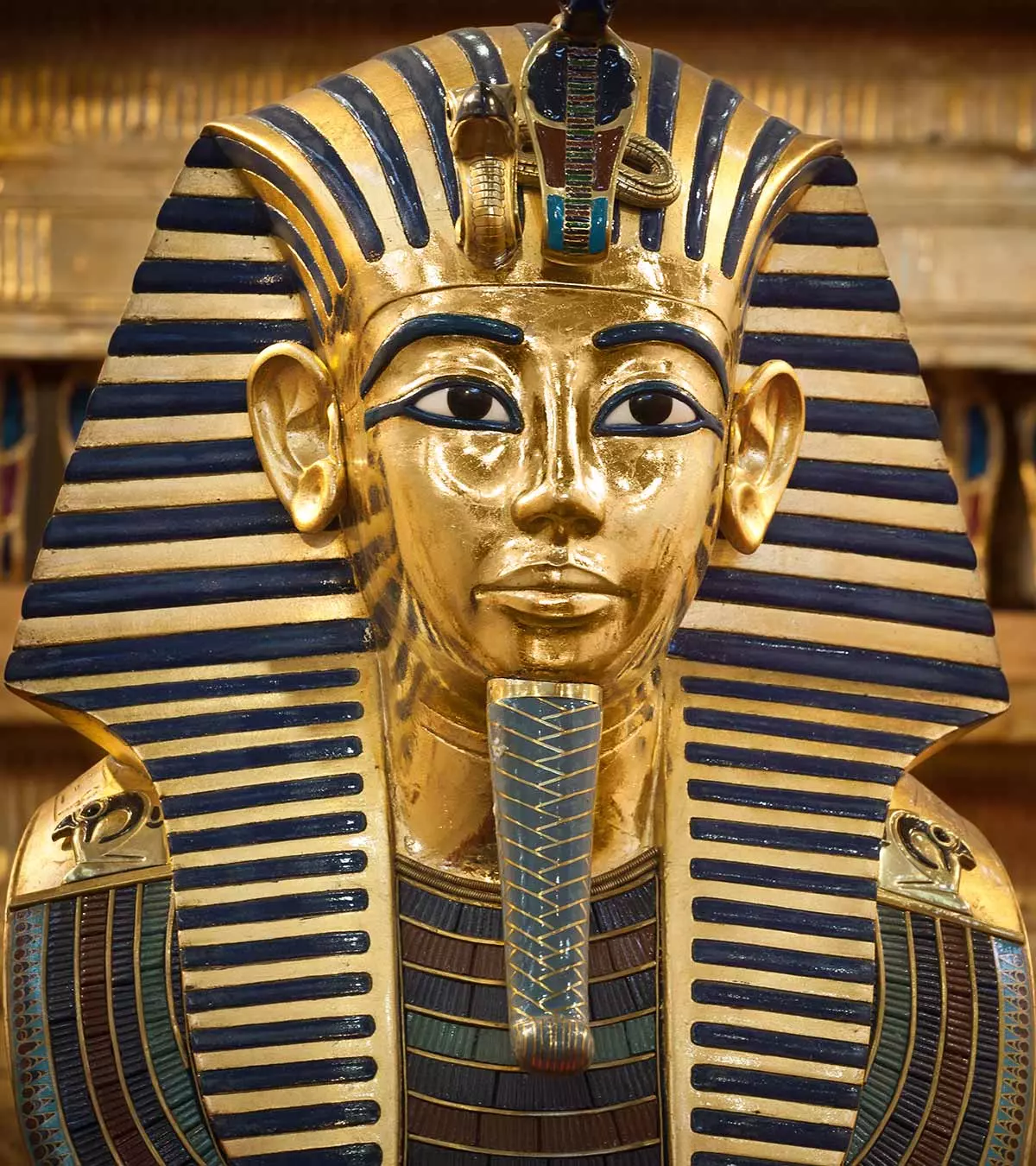
Image: ShutterStock
The beliefs and rituals practiced by ancient Egyptians have fascinated many people, especially children. If your children love to learn about ancient Egypt, you should help them read these Tutankhamun facts for kids.

King Tutankhamun, or Tut, is one of the most famous pharaohs of ancient Egypt, largely due to the discovery of his nearly intact tomb in 1922. His reign has captivated historians and enthusiasts alike as it provides a glimpse into the life and beliefs of the ancient Egyptians.
In this article, we list some astonishing facts about this king for children. So fasten your seat belts and get ready to teleport yourself to the land of the ancient pyramids, sphynxiA mythical creature with a human head and body of a lion , and most importantly, the land of Tutankhamun. Read on to know more.
Key Pointers
- Tutankhamun’s fame rose after the 1922 discovery of his tomb.
- He ascended to the throne at age nine during Egypt’s 18th Dynasty.
- Tutankhamun halted his father’s push to worship the sun god Aten.
- General Horemheb and Vizier Aye aided him, and he married one of his half-sisters.
- His death remains mysterious, but CT scans indicate a fall from a chariot while hunting.
21 Amazing Tutankhamun Facts For Kids
1. Birth and early years
Tutankhamun was born at Akhenaten in the year 1346 BC. He became a Pharaoh at a tender age of nine in the year 1338. He reigned during the 18th Dynasty when the Egyptian Empire was at its peak.
2. Tutankhamun was born Tutankhaten
Tutankhamun’s father, Akhenaten wanted the Egyptians to worship just the sun god Aten, instead of their chief deity Amun or any other god. Aten at the end of Akhenaten and Tutankhaten signified the same. Tutankhaten means ‘living image of Aten’ and Akhenaten means the ‘servant of Aten’. Unfortunately, Akhenaten’s changes did not go down well with his subjects. So, when Tutankhamun took over, he changed things back to how they were. He reopened the closed temples, restored the god Amun to his former glory and moved the capital back to Thebes. He even changed his name to Tutankhamun, which means the ‘living image of Amun’.
3. He married one of his half-sisters
It is believed that Tutankhamun has married one of his half-sisters. Akhenaten, Tutankhamun’s father, was married to Nefertiti, with whom he had six daughters. Akhenaten also had a second wife, named Kira, who is said to be the mother of Tutankhamun. It is said that Tutankhamun married Ankhesenpaaten, one of the six daughters of Nefertiti and Akhenaten. Confused? So are we!
4. A well-nourished leader
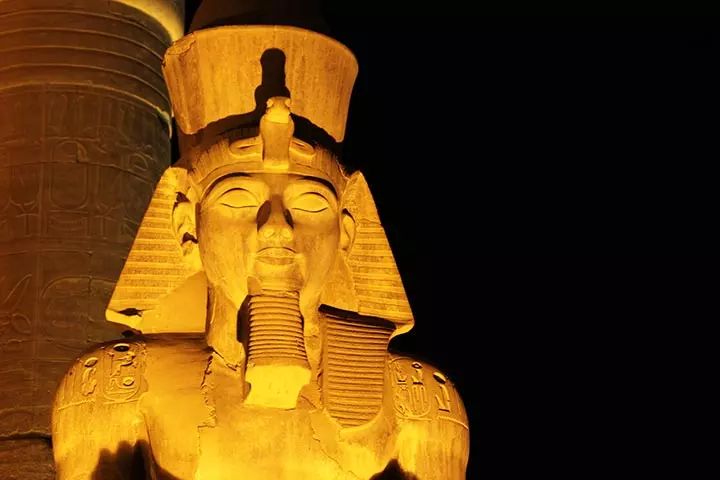
CAT scansiA scanning process where a rotating X-ray machine produces detailed images of the body with the help of a computer done on Tutankhamun’s body revealed that he was around 5 feet 8 inches tall. He was of slight build, but well nourished.
5. The boy king
King Tut was nicknamed Boy King as he began ruling just at the age of nine. Since Tutankhamun was young, he needed help in governing the country. Hence, he was aided by his general Horemheb and vizier named Aye. Aye later succeeded Tutankhamun to the throne.
 Did you know?
Did you know?6. The king’s passing
There is no evidence of how Tutankhamun’s life came to an end. An x-ray on the mummy found fragments of bones in Tutankhamun’s skull. But more recently, the experts concluded the damage to the skull might have occurred after he passed away, at the hands of the crew, or during the embalming process.
Another theory stated that a broken leg caused King Tutankhamun’s departure from life. According to National Geographic, a new CT scan of the mummy showed a coating of embalming resin on the leg, suggesting that Tutankhamun broke his leg just before he passed away. He must have sustained the injury by falling from a chariot while hunting. The infection from the broken leg and other complications may have caused his passing. DNA testing in the year 2010 suggested that Tutankhamun had malaria, which exacerbated the leg infection.
7. Mummified
Tutankhamun’s life ended at 18, and his body was mummified, which is how ancient Egyptians preserved their dead. He was buried hastily in the Valley of the King’s tomb, the burial place of his predecessors, surrounded by 5,000 priceless treasures.
8. Tutankhamun’s reign wiped out shortly after his passing
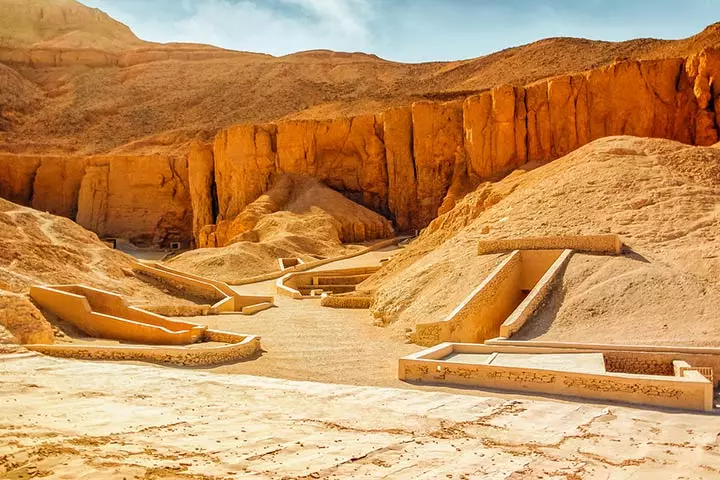
In spite of his popularity, Tutankhamun’s reign was eradicated soon after he passed away. Horemheb, the ruler of Egypt after the passing of Aye failed to make a huge impact on the commoner. Rather, he was unpopular, primarily because of his assertive nature. He even replaced Tutankhamun’s name with his own on several monuments.
9. Tutankhamun was not buried alone
Apart from the priceless funerary objects, two miniature coffins were also found in the chamber. Researchers suggest that the coffins contained Tutankhamun’s daughter. Tutankhamun and his wife had no children. His wife conceived twice but suffered a miscarriage. The bodies of the stillborniFetal death occurring at or after 20 weeks of pregnancy baby girls were mummified and placed in his tomb in small coffins. Experts also say that Tutankhamun left no living heir, perhaps because he and his wife knew that they could conceive children only with fatal congenital disordersiA structural or functional abnormality present from birth .
10. His tomb is connected to the stars
King Tut’s tomb was buried in such a way that the constellation Orion was above the entrance to the tomb. The Egyptians believed that Orion was the soul of Osiris, the God of Afterlife. It is believed that Osiris continues to watch over King Tutankhamun.
 Did you know?
Did you know?11. Discovery of the tomb
Tutankhamun’s tomb was discovered by a team of British archaeologists (Howard Carter and Lord Carnarvon) in 1922 that is nearly 3,000 years after his life ended. The tomb was so well-preserved that the archaeologists were able to get a complete insight of Tutankhamun’s life. It was common for the tomb raiders to steal the treasures buried with the Pharaohs. But they probably couldn’t locate King Tut’s tomb.
12. Contents of the tomb
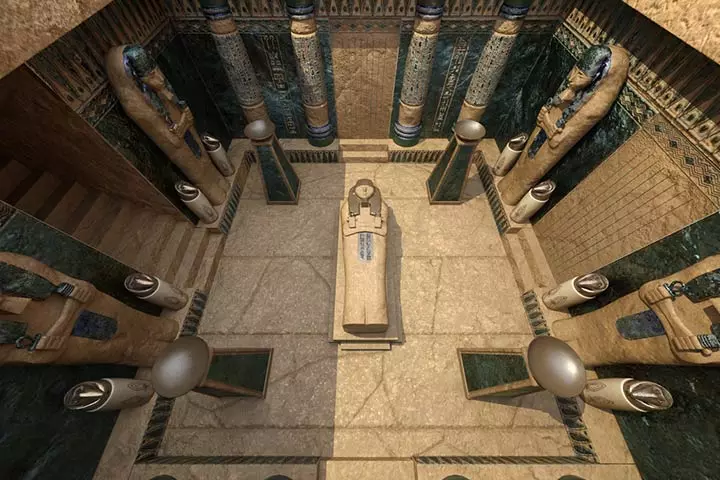
The tomb was considered quite small for a Pharaoh king. It contained four rooms, the burial chamber, the antechamber, the annex and the treasury. The first room explored by Carter was the antechamber. It included pieces of four chariots and three funeral beds.
The burial chamber contained the most prized items, the sarcophagusiA carved or decorated stone coffin and King Tutankhamun’s mummy. The mummy was placed in three nested coffins. The third one was made of gold and had the famous image, which has now become the symbol of King Tut.
The last chamber contained treasures he would need in his afterlife. The ancient Egyptians believed that a person would live in his afterlife the same way he did when he was alive. The treasures in the tomb included a gold crown, canopic jars, paintings, model boats, a golden throne, a cobra, his sandals and big trunks. His sandals had images of his enemies on the soles. So wherever he went, he trampled over his foes.
The annex was filled with varied objects like oils, dishes, board games and others.
The remains are still contained in his tomb, but you can get a view of his burial mask in the Egyptian Museum in Cairo.
13. A long time to research
It took 17 years for the specialists in archaeology to go through all the items in the tomb and write down about each. One thing that Carter noticed was most of the items were just tossed into the tomb, rather than placed in an organized way. Another fact noticed by the archeologists was that the sarcophagus may have belonged to someone else, but the people later changed it to King Tut. It is said that the unexpected death of King Tut did not give his people enough time to make a sarcophagus for him.
14. The Curse of Tutankhamun
It was reported that an inscription above the entrance to the burial chamber read: “Death will come to those who disturb the rest of King Tutankhamun”. Some strange events are reported to have happened after the discovery of the tomb and removal of treasures from it. Media of those times related the mishaps to The Curse of Tutankhamun. The finance for the discovery of Tutankhamun’s tomb was aided by Lord Carnarvon. But in April 1923, that is just seven weeks after the official opening of the chamber, Carnarvon died due to a mosquito bite on the cheek. It was later found that the Pharaoh had a lesion in the same place on the cheek.
At the time of Carnarvon’s death, the light in the city went out, and in his England home, his dog Susie died. Another creepy fact is that Howard’s pet canary was eaten by a cobra on the day of the tomb opening. It was considered proof of the curse as the cobra is the symbol of Goddess Wadjet, the patron of the kings and queens of Egypt.
The media went on to speculate that most of the people involved in the opening of the tomb died shortly afterwards but ignored the fact that the majority survived to live long. And several of those who died shortly were in poor health or were elderly.
A Few More King Tut Facts For Kids
- The archaeologists could work only during the winter season because of the hot weather of Egypt made excavation impossible.
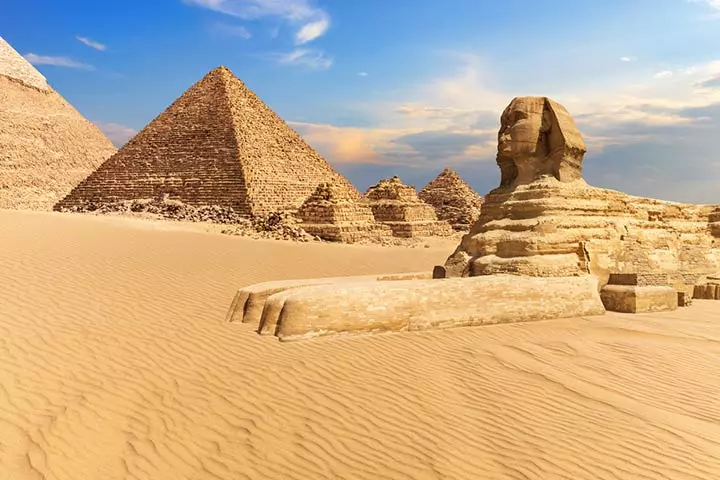
- The designation given to the tomb was KV62; KV stands for the Valley of the Kings and the number 62 was because it was the 62nd tomb found there.
- King Tutankhamun’s mask was made of 22 pounds of gold.
- The treasures obtained from the tomb traveled throughout the globe during the Treasures of Tutankhamun tour from 1972 to 1979.
- It is likely that two Pharaohs ruled for a brief period between Akhenaten and Tutankhamun. These two rulers were Neferneferuaten and Smenkhkare.
- Approximately, 3000 articles were found in the tomb of King Tutankhamun.
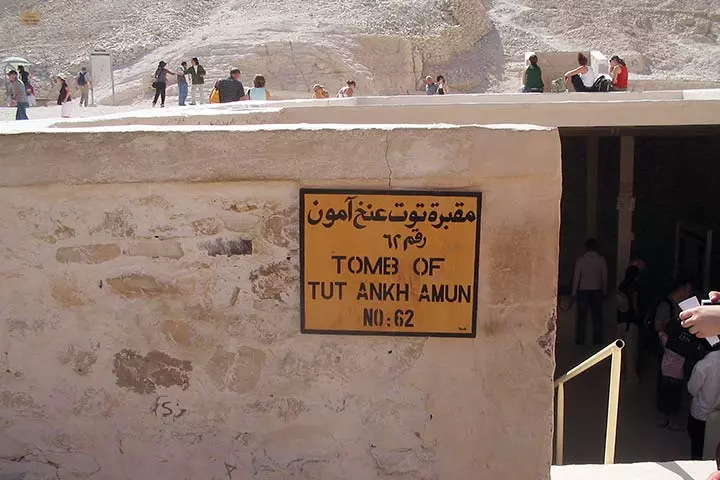
- Tutankhamun is said to have a clubbed foot and he was buried with 130 walking sticks. He even wore orthopedic sandals.
We hope your little history buff enjoyed learning these startling facts about King Tut. If you have any questions related to the article, let us know by commenting below!
Frequently Asked Questions
1. What can kids learn from studying about Tutankhamun?
Studying the life of King Tutankhamun can help children understand ancient Egyptian culture, history, and the importance of archaeology. It can also inspire a love of history and encourage exploration and curiosity about past events.
2. What interactive methods can I use to introduce King Tut’s facts to children?
You can engage children with games like word puzzles, where they have to find words related to Tutankhamun and ancient Egypt. Another fun activity would be having the children draw their interpretation of King Tut and his tomb or treasures. You could also quiz them with enjoyable questions to test their knowledge.
3. What is so special about the contents of King Tut’s tomb?
The untouched tomb of King Tut, home to about five thousand artifacts and unspoiled mummies, helped archeologists and scientists learn about the king’s rule and gain insight into the ancient life of Egypt (1).
4. Why did Tutankhamun wear a mask?
It is believed that the mask was crafted for Tutankhamun to provide additional protection to his body in the tomb. Moreover, the details in the mask are said to resemble his facial features to help his soul find and resurrect him.
5. Why was King Tut erased from history?
According to anecdotal evidence, King Tut was associated with unorthodox religious beliefs, so his successors tried to erase his rule from history.
King Tutankhamun was one of the most famous kings of the ancient Egyptian dynasty and had several notable achievements to his name. This list of fun facts about King Tut for kids presents various notable and exciting attributes of the king, including his early life and death. We have also included information about the mummification process and how his loss of life resulted in the end of a glorious reign. Share these interesting facts and more facts about ancient Egyptian Pharaohs for kids with your child and open the doors to imaginative exploration for them.
Infographic: Amazing Facts About Tutankhamun For Children
Children, our young explorers, are often fascinated by learning ancient historical stories and mysteries. So, whether your child is a history fanatic or loves stories about kings and kingdoms, this infographic highlights information about Tutankhamun. So, save it to read it to them at your convenience and unveil some amazing facts together!
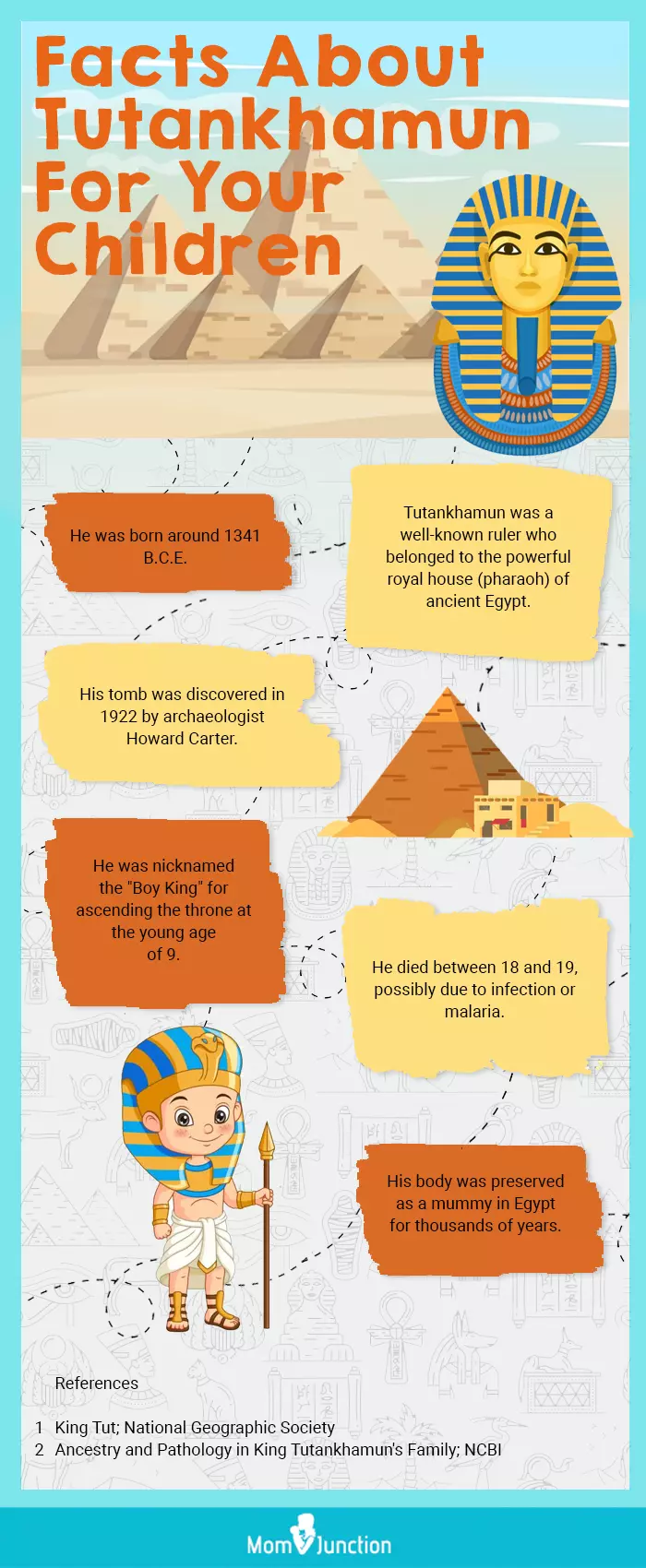
Illustration: Momjunction Design Team
Illustration: Interesting Facts About Tutankhamun For Kids

Image: Stable Diffusion/MomJunction Design Team
Find out some of the most awe-inspiring facts about King Tutankhamun of ancient Egypt. Watch this video to learn when he was born and died, and who discovered his tomb.
References
Community Experiences
Join the conversation and become a part of our nurturing community! Share your stories, experiences, and insights to connect with fellow parents.
Read full bio of Elisa Yi
Read full bio of Manjiri Kochrekar
Read full bio of Harshita Makvana
Read full bio of Praggya Joshi










